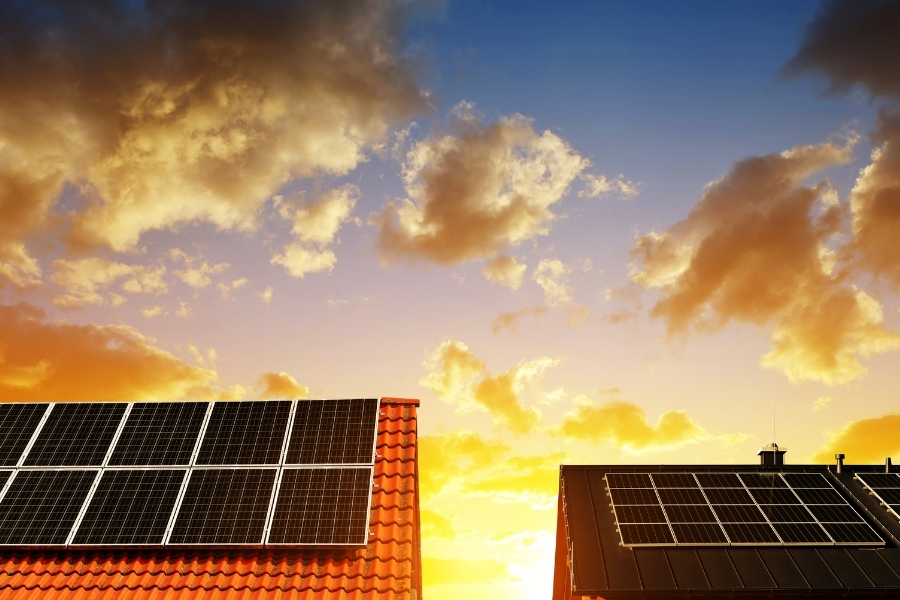The Smart Way to Maximise Use of Your Home Solar Installation
There’s no doubt the 2020s will see immense growth in both smart home and solar technology. The history of development in these fields may be...

Note: Recently we’ve all seen the devastation caused by heavy rains and floods visited upon so many communities across Australia. Just as the plan for this piece was devised before these events arose - alongside the Ukrainian crisis mentioned further below - we of course continue to keep in mind those impacted by these events. The STC team is also planning a separate piece to follow this one that shall specifically discuss the Australian floods of 2022 in-depth.
When it comes to dealing with a crisis in a community such as a hurricane, tornado, volcanic eruption - or even a military conflict - there has always been multiple parts to it. Commonly, the first is to seek to secure the immediate safety of people and their property, and if that’s not possible to get every person out of there (who is ready and willing to leave). The first part is of course very challenging when usually time is of the essence, but so too is the second task that follows; the reestablishment of that community, and the start of the rebuilding in the post-crisis period.
Beginning this stage, and taking the initial steps in helping people return to life as usual is never easy. Nonetheless, with each crisis that occurs near and far, we learn how to manage them more effectively, we find ways in which to utilise advances in technology and processes, and ultimately as a result we get better at being able to more quickly and effectively get people back on their feet, and thereafter back to living normal lives. That’s why having a discussion now about how solar power can be used in post-crisis zones is very worthwhile.
Every crisis is different, yet there are of course commonalities seen from one to the next.
In a post-crisis environment, once the safety of people has been assured, it’s necessary to see they have access to food, water, and shelter. Beyond these essentials, the next step is usually electricity. Not only can electricity of course aid in the provision and quality of the three aforementioned essentials, but it’s also - especially in this era - a vital component in helping people charge goods like their phones, their laptops, and other digital devices, so they can begin to reestablish contact with their family, friends, and others in their social network, as well as getting in touch with relevant parties like their insurance company.
For many years diesel generators were regarded as the go-to item for power generation in a post-crisis environment. Yet while they have served a useful purpose, the reality is diesel generators also have a number of drawbacks. Ultimately, these generators of course run on fossil fuel, and at some point in the future a generator will of course have to get more fuel brought in, in order to continue to operate.
Now, let’s contrast this with solar power. A solar power system is a clean and green operation, it does not need any of its ‘fuel’ to be regularly brought in given it’s capacity to charge daily with sunshine, and as a result, it’ll also never come with the risk of suddenly running out of juice, and requiring fuel to be urgently shipped in from elsewhere, in order to make it run again.
Alongside their use in the early period of a post-crisis situation, solar power systems are also important for what they symbolise. The reality is that numerous communities around the world are already feeling the pain of climate change-linked disasters. In turn, there’s no doubt in the minds of so many of these victims that fossil fuel companies have lost their social licence, given they’ve been major contributors to emissions in years prior, and in lots of cases intend to continue doing so for many years yet.
As a result of this, countless people in a post-crisis zone are likely to find diesel generators are very much on the nose. To be clear, it’s recognised in a crisis situation where power is urgently needed, lots of people will feel it’s not the time to be picky, and will just use whatever power source is available. Nonetheless, it’s also the case that when a community has been hit by a climate change-linked disaster, it’s not hard to understand why dispatching solar systems has the potential to be far more popular than a diesel generator. After all, the utilisation of a solar power system is not contributing to emissions, and thus neither to growing the ongoing risk that climate change poses to daily life and normalcy in many communities near and far, now and going forward,
It’s obviously no revelation to say the crisis in Ukraine is in the minds of all of us right now. The particulars of the conflict are best discussed at another time, in another place. Nonetheless, the STC team certainly joins with our readers in wishing to see a speedy and peaceful end to the conflict. In turn, that the victims of this crisis - all the people of Ukraine, and the millions upon millions of regular Russians who are horrified by what’s occurred, and are now set to suffer either on the battlefield and/or under economic sanctions due to the rogue behaviour of the country’s national authorities - are kept in mind in the days ahead.
Although we won’t be reflecting on the specifics of solar power in post-crisis zones at length pertaining to Ukraine at this time - as instead this article has been planned well before this invasion occurred, and was set to be produced without a specific focus on any particular country or crisis (save for those which we profile in the following section) - it can be noted there is indeed a consciousness that not only is Ukraine indeed facing a crisis situation now, but eventually they will shift to a post-crisis era. In turn, that many would cite the Russian government’s interest in Ukraine surrounding fossil fuels - and more widely, the planned transition to renewable energy across Europe and overseas - as an undercurrent which has informed this outbreak of this conflict.
Once the crisis resolves, and a new chapter where peace prevails officially begins, it could perhaps be the time to revisit this topic, with specific reference to Ukraine. But for now, for anyone with Ukraine in mind who is also interested in understanding the dynamics of the conflict as it relates to energy, some further reading surrounding it can be found here, here, and here.
Just as the theoretical reasons behind why solar power can be very useful in a post-crisis zone certainly have credence, so too is the case for solar further evidenced by its notable real-world use in places like Puerto Rico and Nepal.
In 2017 Hurricane Maria’s arrival had a devastating impact on Puerto Rico, and the work of recovery for this U.S. territory was made more complex by the loss of power during the storm. While the work that goes into restoring a grid such as Puerto Rico’s certainly requires a lot of time and different pieces - with it initially estimated that it would take up to six months to get power restored, and some ultimately waiting up to 11 months until they got their mains power back on - solar power proved a significant contributor to these efforts.
Tesla notably donated hundreds of powerwalls to Puerto Rico, which offered the potential for existing solar systems to utilise Tesla’s batteries as an avenue for the storage of excess solar energy, which could be called upon outside times - such as night - when the solar system wasn’t generating a great deal of power.
Furthermore, back in 2015, following the impact of a 7.8 magnitude earthquake in Nepal, SunFarmer sought to step up work with the Nepalese people to provide solar power systems, batteries, and solar water purifiers. This followed on from endeavours the non-profit organisation had already been pursuing in the country in the years prior, and over US$100,000 was raised in donations to fund relief efforts which helped see solar systems installed in rebuilt health clinics throughout Nepal.
What solar power offers in a post-crisis environment is truly terrific, as a technology that is easy to install, easy to use, and set to last (essentially) forever. Its use in Puerto Rico and Nepal illustrates its theoretical potential in a post-crisis environment does indeed convert to real action. Of course more work remains to be done in refining the management of post-crisis environments - and in turn we all look forward to the ongoing advances in solar power which will enable it to become even more effective and easy to use - but as we begin to drive firmly into this decade of the 2020s that shall see solar continue to enjoy rapid growth, we can also expect it will acquire its rightful place at the forefront of post-crisis power solutions in the years ahead.
In the meantime, it’s indeed worth noting that - for all the tremendous benefits solar can bring to a post-crisis scenario - there is also of course the reality that such endeavours with solar power will need to be utilised far less if there are fewer crises. Accordingly, while it’s most certainly the case that natural disasters have always been a feature of this planet, nonetheless, the rise of climate change-linked incidents is a far newer phenomenon. As a result, just as all of us can identify value in solar power’s capabilities in a post-crisis scenario, so too does the same apply when it comes to seeing value in greater action being taken by government and other stakeholders to reduce the impact of climate change.
Climate change-linked disasters are sadly set to keep occurring for many years yet - the fact is even if all emissions stopped today, the global temperature would keep rising for decades - but it is still possible to prevent the worst-case outcomes surrounding climate change from occurring. Yet to travel down a better path that avoids such perils, greater action must be taken now. Ultimately, this must occur to see properly and sympathetically acknowledged the suffering of people who have already been impacted by climate change-linked disasters, and also to prevent more of it happening in the future.

There’s no doubt the 2020s will see immense growth in both smart home and solar technology. The history of development in these fields may be...
Across Australia, there’s a solid understanding weather conditions can impact solar installations. After all, it’s understood solar panels need...
The conventional construction methods worked effectively so far and many homeowners who have decided to build their new home are asking why they...